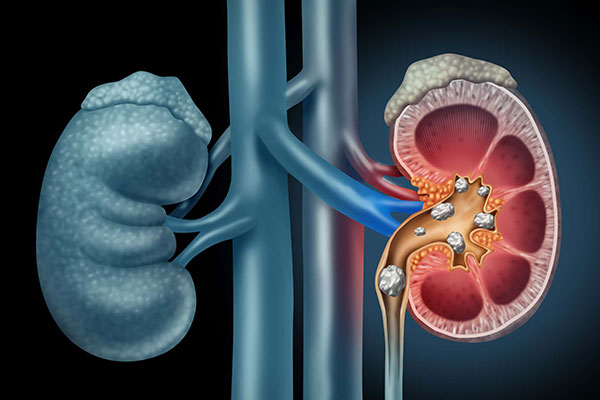Water intake and kidney stones

Nephrolithiasis, widely known as kidney stones, are hard deposits made of minerals and salts that form inside the kidneys.
Signs and Symptoms
Small kidney stones may remain undetected and will not cause any pain. Some can be passed out in the urine. When the stones block part of the urinary system, such as the ureter or the urethra, patients may experience pain in the back, below the ribs, or in the lower abdomen or groin accompanied by nausea and vomiting, persistent need to urinate, painful urination, and can see pink, red or brown urine.
Citizens are recommended to seek immediate medical attention when they have difficulty passing urine, and/or have severe pain that make it hard to sit still.
Hydration is important in prevention
Kidney stones form when certain chemicals build up in the urine to form crystals. As the urine cannot dilute the crystals, they come together and form a hard stone substance. When there is dehydration or low water intake, minerals in urine cannot be diluted and excreted. They then form crystals and become kidney stones. Medical studies have shown adequate fluid intake can help decrease the concentration of substances in the stone formation. Citizens are recommended to drink enough fluids which is roughly eight standard 8-ounce cups a day to pass more urine. For people who live in warm climates and those who sweat a lot, they should increase daily water intake to prevent from dehydration.
High-risk groups
There is no single cause for kidney stones, while some existing factors that may increase the risk of developing the stones. For instance, people who have family history of kidney stones are more likely to develop the disease. And people who tend to have more salt and protein in the diet may cause a burden on kidney and run higher risk of getting kidney stones. Patients with obesity, diabetes, and digestive diseases, such as inflammatory bowel disease or chronic diarrhoea can affect the absorption of calcium and water, increasing the levels of stone-forming substances in urine.
Diagnosis
Calcium-containing stones are relatively radiopaque, and they can often be detected by a traditional radiograph of the abdomen that includes the kidneys, ureters, and bladder. Meanwhile, an intravenous pyelogram may be performed to help confirm the diagnosis of urolithiasis. Renal ultrasonography can sometimes be useful, because it gives details about the presence of hydronephrosis, suggesting that the stone is blocking the outflow of urine.
Treatment
Most stones under 5 mm (0.2 in) pass spontaneously. Surgical approaches are required in persons with obstructing stones, or a urinary tract infection. More recently, flexible ureteroscopy with lithotripsy can provide immediate relief of an obstructed kidney. The ureteroscopy involves the placement of a ureteral stent extending from the bladder, up the ureter and into the kidney.
Prevention
To avoid getting kidney stones, citizens should drink plenty of water every day so that you will not be dehydrated. People should avoid excessive consumption of particular foods including beets, chocolates, nuts and tea that are rich in oxalate, and too much animal protein, such as red meat and poultry. All above can contribute to kidney stones.
*The above information is for reference only, please consult your doctor for detail.

 3405 8288
3405 8288
